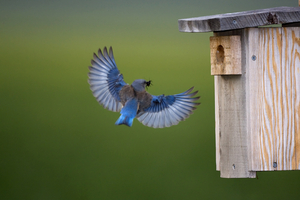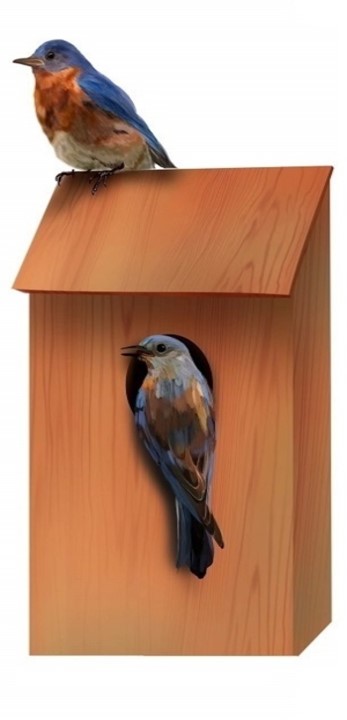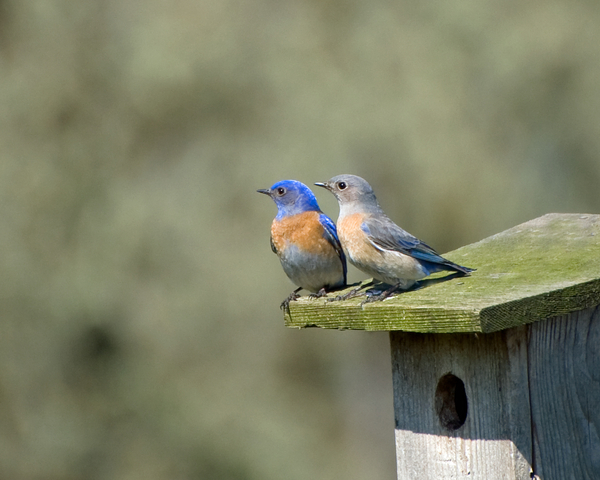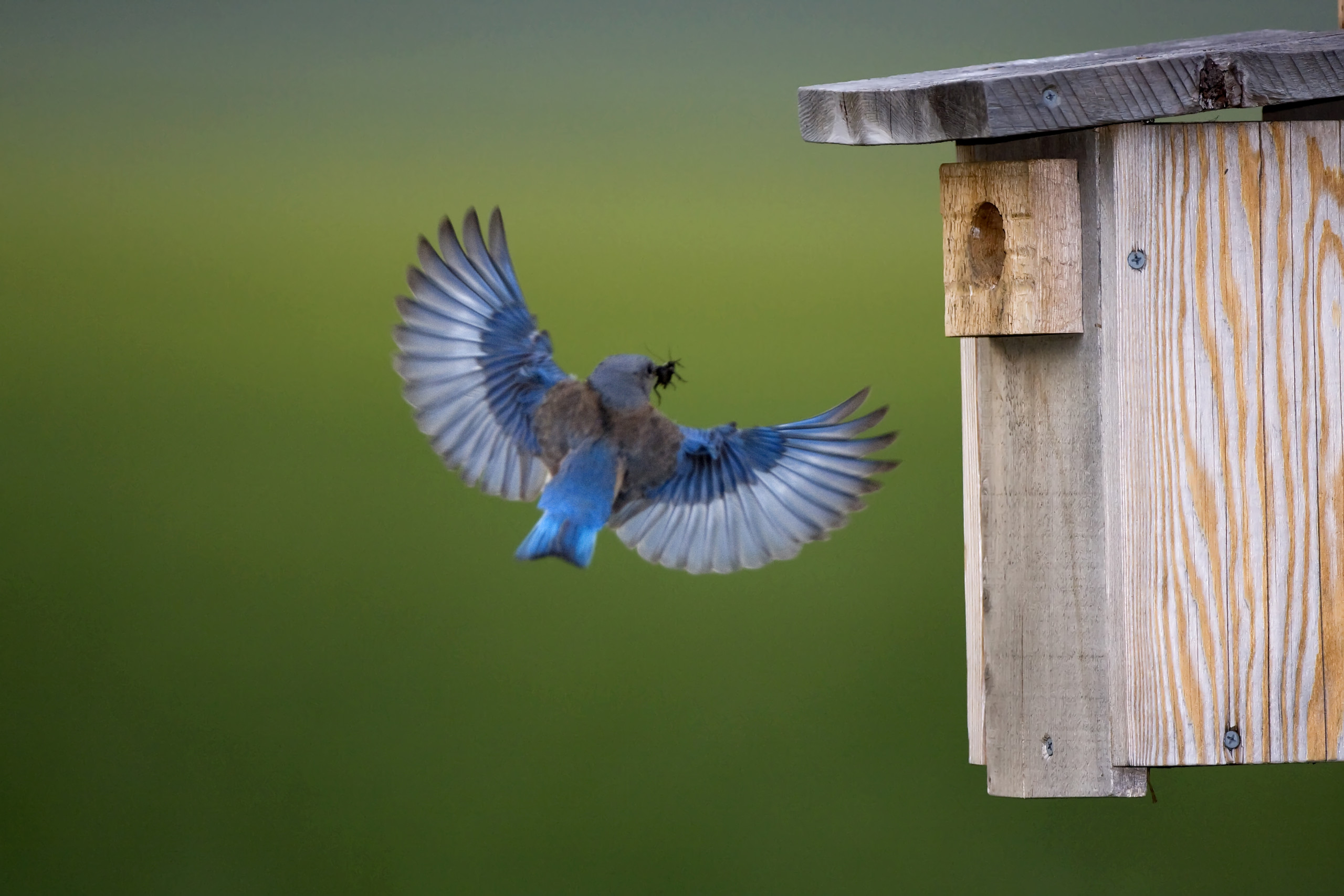 LINKED PAPER
LINKED PAPER
Competitive events during nest building influence offspring growth and behaviour, but not testosterone deposition in the egg yolk in Western Bluebirds (Sialia mexicana). Hernández, A., Hernández-Martínez, A. Nicolás, L., Torres, R. & Montoya, B. 2022 Ibis. doi: 10.1111/ibi.13098 VIEW
Western Bluebirds (Sialia mexicana) are small passerines that breed from South Canada to Central Mexico. This species breeds on cavities (natural on trees or artificial) that they do not excavate by their own (i.e., they are secondary cavity nester). Western Bluebirds compete with other secondary cavity species for nest sites, and these competitive interactions can trigger changes in the amount of testosterone the mother transfer to the egg (i.e., a testosterone-mediated maternal effect), and these modifications in the egg content can have short- and long-term impacts on the progeny.

Figure 1 Male (on the top) and female (in the box entrance) Western Bluebird (Sialia mexicana).
For example, in northern populations of this species, female competitive interactions during early stages of egg formation promotes the development of dispersive and aggressive male offspring at sexual maturity, as a consequence of the increase in yolk testosterone level (Duckworth et al. 2015) and these offspring traits may allow them to colonize new breeding areas. However, competitive pressures for nest sites vary through the range of distribution of Western Bluebirds and this variation may influence female breeding strategies, the stimulus that trigger maternal effects, and the type of maternal effects displayed. The importance of ecological variation on maternal effects and the potential consequences on offspring phenotype deserve further investigation.

Figure 2 Western Bluebirds USFWS – Pacific Region CC BY-NC 2.0 Flickr.
In our study, we followed one of the southernmost populations of Western Bluebirds (La Malinche National Park, Tlaxcala, Mexico) and experimentally increased the level of competition for nest cavities during the nest-building period. To increase the perceived level of competition, we decreased the number of available nestboxes near the experimental nest and simulated territorial intrusions of the main competitor of Western Bluebirds in the population of study by displaying a 3D model and a playback of a House Wren (Troglodytes aedon) twice a week from nest construction to egg laying. In the control group, no boxes were removed and the simulated intrusions and playbacks were performed with a 3D model and vocalizations of a Red Warbler (Cardellina rubra), a ground nesting species that do not compete with Western Bluebirds. After clutch completion, we took an egg yolk sample to quantify testosterone concentration, and we recorded the offspring growth, behaviour (breathing rate and tonic immobility) and fledging survival.
We found that Western Bluebird females from this Southern population did not modify yolk testosterone levels in response to increased nest competition. However, the experimentally increased competition influenced the offspring phenotype. Chicks in the experimental group were lighter at the age of three days, then exhibited an accelerated growth rate in the first half of the nesting period, followed by a slower growth gain in the second one, and ended up with larger tarsus at age 15 days compared to chicks in the control group. Moreover, experimental chicks exhibited lower breathing rate and marginally lower fledging survival probability.
Unlike the northern populations where maternal competition for breeding sites influences offspring phenotype through changes in egg yolk testosterone deposition, in the southern population studied here, maternal competition affected offspring growth through mechanisms that do not involve changes in egg yolk testosterone. Parental behaviour post-hatching may be a candidate mechanism linking maternal competition to changes in offspring phenotype, if parents exposed to increased competition modify parental care influencing offspring growth, behaviour and survival (Siefferman & Burdick 2020). Taken together, our results suggest that ecological differences among populations may determine the type of maternal effects triggered, the key stimuli and its consequences on the offspring (Albers et al. 2017).
References
Albers, A.N., Jones, J.A., & Siefferman, L. 2017. Behavioral differences among Eastern bluebird populations could be a consequence of tree swallow presence: a pilot study. Frontiers in Ecology and Evolution 5: 116. VIEW
Duckworth, R.A., Belloni, V., & Anderson, S.R. 2015. Cycles of species replacement emerge from locally induced maternal effects on offspring behavior in a passerine bird. Science 347: 875-877. VIEW
Siefferman, L.M., & Burdick, C. 2020. Interspecific density influences the adaptive significance of provisioning coordination between breeding partners. Frontiers in Ecology and Evolution 8: 29 VIEW
Image credit
Top right: Kevin Cole © CC BY 2.0 Wikimedia Commons.
If you want to write about your research in #theBOUblog, then please see here.





